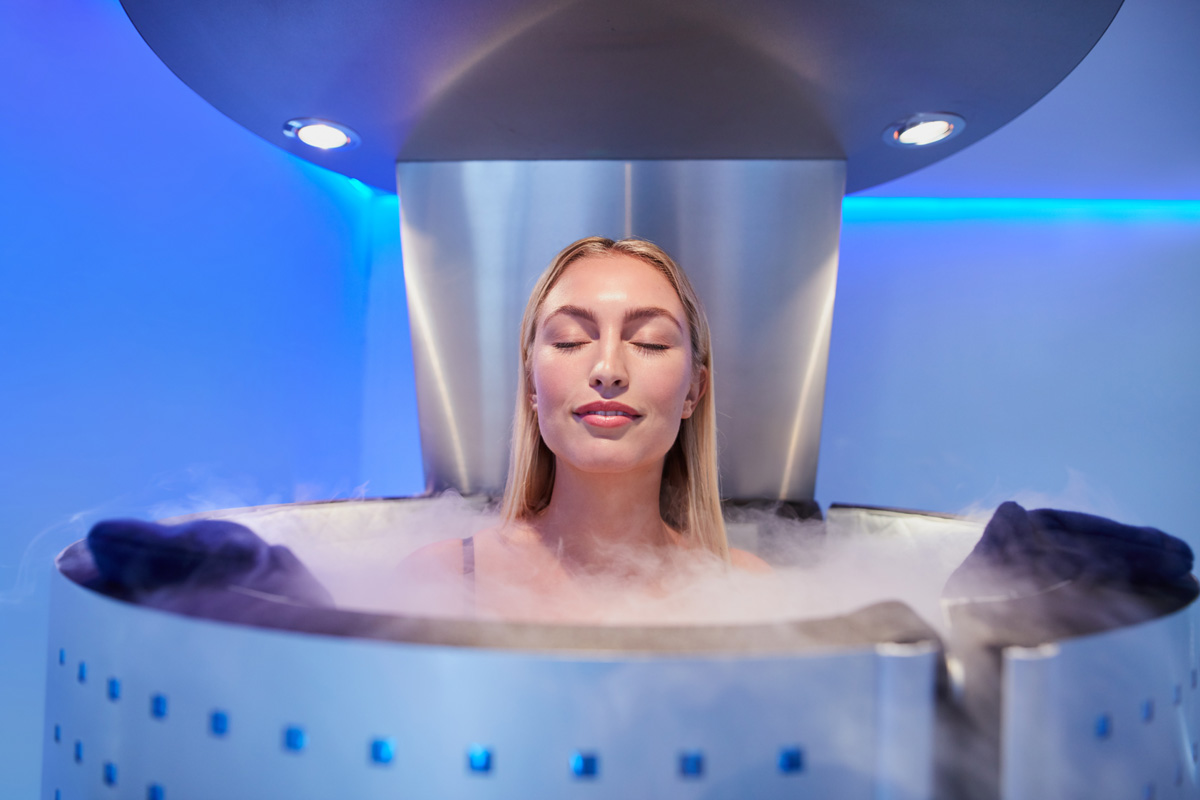In the realm of recovery, physical therapy offers a multitude of effective techniques designed to restore functionality and alleviate discomfort. From the well-recognised benefits of hydrotherapy, to the less traditional, yet increasingly popular light therapy, these fourteen options provide a broad spectrum of possibilities to assist in your rehabilitation journey. But how can we discern which methods would be most advantageous for individual circumstances? To gain a more comprehensive understanding, let’s examine these therapeutic approaches in detail.
Understanding Physical Therapy
To truly grasp the potential benefits of physical therapy, one must first understand what this discipline entails and the principles upon which it operates. Physical therapy, also known as physiotherapy, is a branch of rehabilitative healthcare that employs physical methods such as massage, heat treatment, and exercise to treat illnesses, injuries, or deformities.
Physiotherapy techniques are varied and tailored to the individual patient’s needs. They can include manual therapy, where a physiotherapist uses their hands to manipulate tissues; therapeutic exercise, designed to restore or improve physical function; and electrotherapy, which uses electrical energy for treatment.
Therapy equipment, an integral part of physiotherapy, ranges from simple exercise balls and resistance bands to more complex machinery like treadmills and stationary bicycles. More advanced equipment can include ultrasound machines, which deliver sound waves to treat deep tissues, and transcutaneous electrical nerve stimulation (TENS) units, which help manage pain by sending low-voltage electrical signals to the affected area.
Benefits of Hydrotherapy
Diving into the realm of hydrotherapy, one discovers a unique form of physical therapy that harnesses the power of water to rehabilitate injuries and alleviate various physical conditions. The buoyancy, resistance, and thermal features of water act in synergy to provide healing benefits that traditional land-based therapies may not offer.
Hydrotherapy equipment, such as underwater treadmills, resistance devices, and whirlpool baths, enable tailored treatment plans built on patient-specific needs. These tools help in conducting a range of aquatic exercises, which can improve muscle strength, enhance cardiovascular function, and boost flexibility, all while inducing less stress on the joints.
Furthermore, the warm water used in hydrotherapy relaxes muscle tension and increases blood circulation, thus promoting quicker healing and pain relief. It also enables patients with mobility issues, such as those recovering from stroke or those with arthritis, to move more freely and comfortably, thereby improving their range of motion and overall quality of life.
The Power of Manual Therapy
In the vast spectrum of physical therapy, manual therapy emerges as a powerful and highly effective method for the treatment and management of various musculoskeletal conditions. The therapist’s techniques in manual therapy involve direct physical interaction aimed at reducing pain, improving tissue extensibility, and increasing range of motion, thereby enhancing the patient’s experience during recovery.
Manual therapy encompasses several techniques, each with its unique benefits:
- Joint Manipulation: Often characterized by a high-velocity, low-amplitude thrust, this technique can provide immediate pain relief and improved mobility.
- Soft Tissue Work: This includes techniques like massage and myofascial release, which help to reduce muscle tension and improve circulation.
- Mobilizations: These slower, rhythmical movements are aimed at stretching tight areas of the body and improving joint movement.
The effectiveness of manual therapy largely depends on the skill and expertise of the therapist, understanding the patient’s unique needs, and the application of appropriate techniques. Despite the varying techniques, the ultimate goal remains the same: to enhance the patient’s healing process and improve their overall quality of life. Hence, the power of manual therapy lies in its patient-centered approach, providing personalized treatment for optimal recovery.
Heat Therapy for Pain Relief
While manual therapy plays a significant role in physical rehabilitation, another effective approach to managing pain and promoting recovery is heat therapy. This method utilizes temperature to alleviate discomfort and expedite healing, with techniques ranging from traditional hot packs to more advanced methods like infrared saunas.
Heat wraps usage is a common and convenient form of heat therapy. The heat provided by these wraps helps to increase blood flow and relax muscles, leading to pain relief and a decrease in stiffness. They are particularly beneficial for chronic conditions such as arthritis or lower back pain, where sustained heat can provide significant relief.
Infrared sauna benefits are extensive, going beyond conventional heat therapy. The infrared rays penetrate deep into tissues, stimulating circulation at a cellular level. This enhanced blood flow carries oxygen and nutrients that promote healing, reduce inflammation, and relieve pain. Furthermore, infrared saunas aid in the removal of toxins, contributing to overall wellness.

Cryotherapy and Recovery
Cryotherapy, an increasingly popular physical therapy method, provides numerous benefits for recovery. It is imperative to comprehend cryotherapy’s therapeutic mechanism and its positive effects on the human body. Furthermore, understanding the recovery process post-cryotherapy is crucial in ensuring optimal health outcomes.
Understanding Cryotherapy
Delving into the realm of cryotherapy, it’s essential to recognize this technique as a promising and increasingly popular method for aiding recovery in physical therapy. This innovative treatment involves the localized or whole-body exposure to subzero temperatures to promote healing and reduce inflammation.
While cryotherapy offers numerous benefits, it’s prudent to understand the potential risks and available alternatives:
– Cryotherapy Risks: Like any therapeutic treatment, cryotherapy isn’t without risks. Potential complications may include numbness, tingling, and in extreme cases, frostbite.
– Cryotherapy Alternatives: There are other options for those wary of cryotherapy’s potential risks, including traditional icing methods, compression therapy, and nonsteroidal anti-inflammatory drugs (NSAIDs).
– Individual Considerations: Cryotherapy isn’t suitable for everyone. Those with certain medical conditions should consult their healthcare provider before proceeding with this therapy.
Benefits of Cryotherapy
Despite potential hazards associated with its use, the benefits of cryotherapy in the realm of physical therapy and recovery are manifold and warrant consideration. Firstly, cryotherapy has been proven to significantly reduce inflammation and pain, thus enhancing the effectiveness of subsequent physical therapy sessions. Secondly, it promotes faster recovery by improving blood circulation and reducing muscle soreness. Cryotherapy safety is paramount, and when administered correctly, the risk of any adverse effects is minimal. In cases where cryotherapy might not be suitable, cryotherapy alternatives such as cold water immersion or the application of ice packs can be considered. These alternatives, while not as potent, can still provide similar benefits, making them viable options in physical therapy and recovery.
Cryotherapy Recovery Process
In the context of recovery, the process following a cryotherapy session is crucial in maximizing the therapeutic benefits and ensuring optimal healing. This procedure, however, is not without its cryotherapy risks such as frostbite, numbness, or skin irritation. Therefore, it is essential to follow post-session guidelines diligently.
- Hydrate sufficiently to compensate for any moisture loss.
- Avoid strenuous activity immediately after the session to prevent injury.
- Monitor skin for any signs of adverse reactions.
Despite its benefits, some individuals may seek cryotherapy alternatives due to medical contraindications or personal preference. Physical therapies such as hydrotherapy, compression therapy, or heat therapy can serve as viable alternatives. Remember, the goal is to facilitate recovery, and choosing the right therapy can make a significant difference.
The Role of Exercise Therapy
Exercise therapy, an integral part of physical rehabilitation, utilizes targeted movements and controlled physical activity to promote healing and restore function. It is a modality that physiotherapists often employ to help patients regain their strength, flexibility, and endurance. A well-structured exercise prescription can offer several advantages. It can be customized to address a patient’s specific needs, making it an adaptable and versatile treatment option. Furthermore, it not only aids in physical recovery but also promotes overall health and wellness, reducing the risk of future injuries.
However, exercise therapy also has its limitations. It requires active participation and commitment from the patient, which can be challenging for those with severe pain or mobility issues. Compliance can also be a problem, with some patients failing to adhere to the prescribed regimen, thereby hindering their own recovery process. In such cases, a therapist must take into account these limitations and adjust the exercise therapy accordingly, ensuring the patient’s comfort and safety while striving to achieve the therapeutic goals. Although not a standalone solution, exercise therapy plays a significant role in the comprehensive approach to physical rehabilitation.
Ultrasound Therapy Explained
Ultrasound therapy, a common modality in physical therapy, warrants careful consideration. This therapeutic technique, which uses sound waves to treat pain and promote tissue healing, offers a multitude of benefits. An understanding of ultrasound therapy will provide insight into its application and effectiveness in the context of recovery.
Understanding Ultrasound Therapy
Harnessing the power of sound waves, ultrasound therapy emerges as an effective, non-invasive technique in the realm of physical therapy, often utilized to alleviate pain and promote tissue healing. The therapeutic ultrasound history dates back to the 1940s, with advancements in technology enhancing its effectiveness over time.
In essence, ultrasound therapy involves directing high-frequency sound waves into the body, which stimulates the tissues beneath the skin’s surface. The ultrasound frequency effects include increased blood flow, reduced swelling and inflammation, and stimulation of the cell-repair process.
Key points to understand about ultrasound therapy:
– It uses sound waves to stimulate tissue repair
– The intensity and duration of treatment can be adjusted to cater to individual needs
– It is often used in conjunction with other physical therapy techniques.
Benefits of Ultrasound Therapy
Building on its unique approach to stimulate tissue repair, ultrasound therapy offers a host of benefits that contribute significantly to recovery and rehabilitation. This method is non-invasive and often painless, enabling patients to receive treatment without the risk of infection or discomfort associated with surgical procedures.
Ultrasound safety measures are strictly adhered to, ensuring the patient’s well-being during the process. The procedure uses sound waves to treat deep tissues, promoting blood circulation and accelerating the healing process. It can also alleviate pain and inflammation, enhancing mobility and quality of life.
However, like all treatments, ultrasound therapy has limitations. Its effectiveness varies based on the severity and nature of the injury. It is also essential to use this therapy under the guidance of a trained professional to ensure optimal results.
Electrical Stimulation Therapy
In the realm of physical therapy, Electrical Stimulation Therapy stands as a highly effective method that utilizes electrical currents to promote muscle healing and reduce pain. This innovative technique employs electrode placement strategies and stimulation frequency effects to optimize therapeutic outcomes.
Strategic electrode placement is crucial in Electrical Stimulation Therapy. It is imperative that they are positioned correctly on the body to target the specific muscle groups that require therapy. Improper placement could lead to ineffective treatment or discomfort for the patient.
Stimulation frequency also plays a significant role in the effectiveness of this therapy. Different frequencies can provoke various physiological responses. For instance, low frequencies typically target sensory nerves, while higher frequencies aim at motor nerves.
To add depth, below are some key aspects of this therapy:
- It can be tailored to individual patient needs, allowing for personalized treatment plans.
- It offers the ability to target specific muscle groups, leading to more focused and effective treatment.
- It leverages the body’s natural healing mechanisms by encouraging increased blood flow and muscle movement.
Benefits of Traction Therapy
While Electrical Stimulation Therapy focuses on using electrical currents for healing, another effective method in the realm of physical therapy is Traction Therapy, a treatment that offers a plethora of benefits. This treatment method involves creating a pulling force on the spine or joints to reduce pain and promote healing.
Traction Equipment Types vary, allowing for both manual and mechanical application. Manual traction involves a therapist using their hands to apply the force, while mechanical traction uses a device or machine. Devices can be as simple as weights and pulleys, or as complex as electronic traction units.
Benefits of Traction Therapy include reduced joint pain, increased mobility, and the promotion of optimal alignment. It can be particularly beneficial for patients suffering from herniated discs, sciatica or degenerative disc disease, offering a non-surgical alternative to relieve pain and improve function.
However, like any treatment, Traction Therapy does carry certain risks. While generally considered safe, improper use of traction equipment can lead to injury. It is also not suitable for all patients, including those with certain bone diseases or pregnant women. Therefore, it is crucial that this therapy is administered by a trained professional who can ensure its application is safe and effective.
Light Therapy in Rehabilitation
Harnessing the power of specific light wavelengths, Light Therapy emerges as an innovative and non-invasive technique in rehabilitation, offering therapeutic benefits across a range of physical conditions. This modality, often facilitated through various Light Therapy Devices, employs the science of Photobiomodulation to trigger cellular responses that aid in tissue recovery and pain reduction.
Its unique advantages include:
– Non-invasiveness: No incisions or needles, making it ideal for patients with a low pain threshold or fear of invasive procedures.
– Versatility: Effective in managing a variety of conditions, from musculoskeletal issues to skin disorders.
– Convenience: Portable devices available for at-home use, enabling continuous treatment and faster recovery.
Photobiomodulation Benefits are numerous, including the reduction of inflammation and edema, improved blood flow, accelerated tissue repair and growth, and increased cellular metabolism. These effects collectively contribute to faster rehabilitation and enhanced patient comfort.
Light Therapy, therefore, offers an efficacious solution for those seeking a non-invasive, versatile and convenient method of physical rehabilitation. Its role in modern physical therapy is becoming increasingly acknowledged, paving the way for further exploration and application in the field.
Incorporating Massage Therapy
Building on the theme of effective non-invasive treatments, another notable modality of physical therapy is the incorporation of Massage Therapy. This involves the manipulation of soft tissues in the body, including muscles, tendons, ligaments, and fascia, to alleviate pain, improve mobility, and enhance overall wellness.
The efficacy of massage therapy is highly dependent on the application of specific massage techniques tailored to the patient’s unique needs. Techniques may range from light stroking to deep pressure methods that target specific areas of discomfort or tension. Techniques such as Swedish massage, deep tissue massage, sports massage and trigger point therapy are among the most commonly applied in physical therapy settings.
Therapy duration is another key factor influencing the effectiveness of massage therapy. While shorter sessions may provide temporary relief from acute pain, comprehensive recovery typically necessitates longer, more frequent therapy sessions. An experienced physical therapist will assess the patient’s condition and customize the therapy duration to maximize therapeutic benefits.
Frequently Asked Questions
What Are the Potential Side Effects or Risks Associated With Physical Therapy?
Potential risks of physical therapy can include increased pain or discomfort, and injuries from improper techniques. These risks can be minimized by ensuring therapist qualifications and maintaining patient comfort levels during the therapy sessions.
How Long Does It Typically Take to See Results From Physical Therapy?
The duration to see therapy effectiveness typically varies depending on the individual’s condition and patient compliance. Consistent participation in prescribed exercises can result in noticeable improvements within a few weeks to several months.
Can Physical Therapy Be Used in Conjunction With Other Treatments Such as Medication or Surgery?
Absolutely, Therapy Integration is key in many recovery processes. Physical therapy can be effectively used alongside other treatments like medication or surgery. This Treatment Balance promotes comprehensive healing and maximizes the patient’s recovery potential.
Is Physical Therapy Covered by Most Insurance Plans?
Yes, most insurance plans do cover physical therapy. However, insurance limitations may restrict the number or type of sessions. Out of pocket costs can also vary based on the specific plan and treatment required.
How Frequently Should One Undergo Physical Therapy Sessions for Effective Recovery?
The frequency of physical therapy sessions largely depends on individual patient needs. However, achieving optimal recovery often requires a balance of therapy intensity and patient compliance, with consistent, regular sessions typically yielding the best results.


